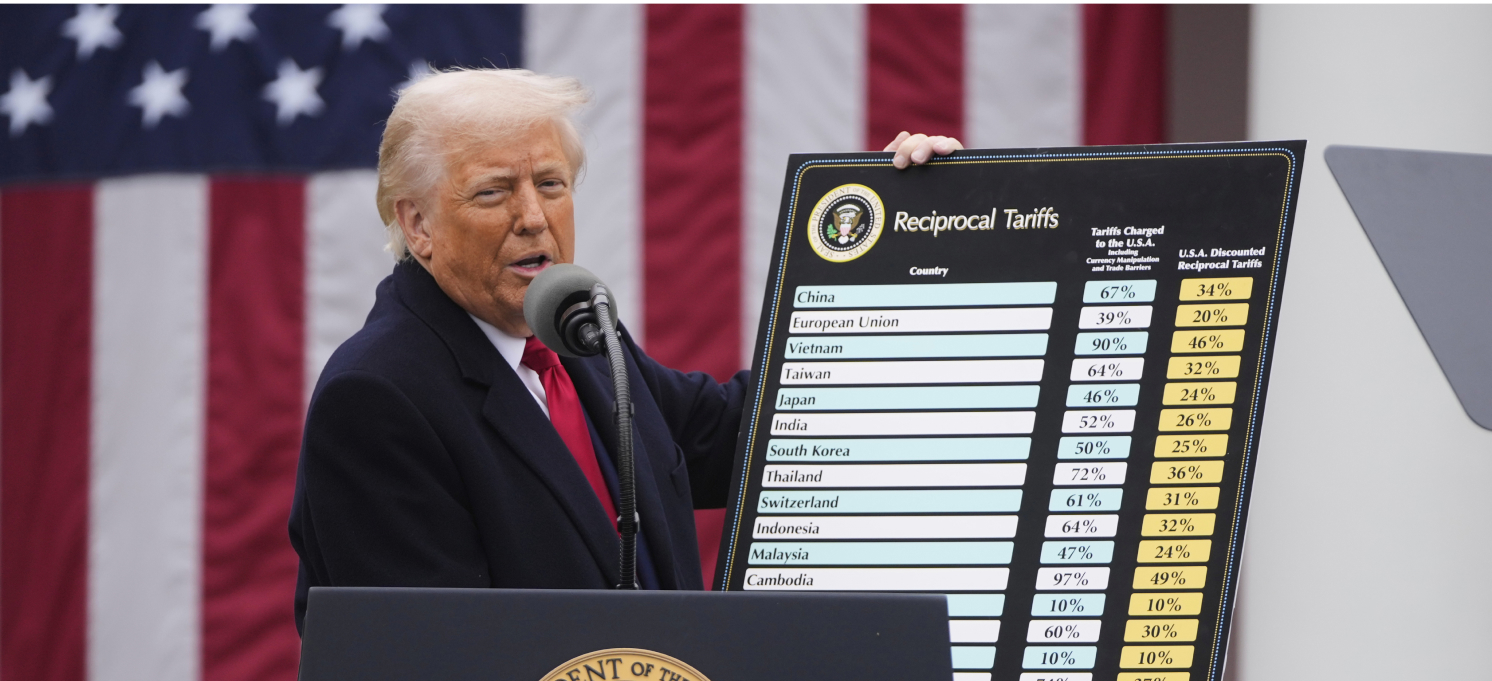
7 graphs explaining Russia’s wartime economy
Hello! Welcome to your weekly guide to the Russian economy — brought to you by The Bell. This week we have compiled 7 graphs that help explain how Russia’s economy has adapted to war time and why it’s proved to be so resilient in the face of sanctions. We also look at Rosneft boss Igor Sechin’s decision to air a series of grievances.
Why is Russia’s economy standing up so well to Western sanctions?
“The Russian economy will be devastated [by sanctions],” predicted the U.S. Treasury Secretary Janet Yellen after Russia invaded Ukraine. And, it’s true Russia soon became the world’s most sanctioned country. It also lost access to most of its gold reserves, was cut off from foreign technologies, and was blocked from its main energy export markets.
But Russia’s economy is a long way from being devastated. Indeed, it has proven far more resilient than many believed possible. The International Monetary Fund now predicts that Russian GDP will expand 2.2% this year, while the Russian Economic Development Ministry expects that it will grow as much as 2.8%.
Much of this has been down to buoyant hydrocarbon prices. And Moscow has been able to pivot its oil exports toward Asia (now the destination for 80% of Russian crude delivered by sea). Meanwhile, the Western oil price cap has not worked as well as was hoped.
Sanctioned goods, including critical components for military equipment, continue to reach Russia via neighboring countries. Indeed, the reorientation of economic interests toward China, which has proved a valuable partner, has been significant: Beijing is now Moscow’s main trade partner, and the yuan is one of the main foreign currencies in Russia.
Today, Russia’s economy increasingly resembles a classic war economy in which the state mobilizes production to serve the military. We have put together seven graphs that help show how the Russian economy is faring after 21 months of fighting in Ukraine:

In September, Russian Finance Minister Anton Siluanov said: “the main focus [of the Russian budget] is to ensure our victory – the army, defense capability, armed forces, fighters, everything we need for the front, everything we need for victory.” And Russia’s 2024 budget is a true wartime budget. For the first time in history, spending on defense will outstrip social expenditures: 10.7 trillion rubles ($120 billion) against 7.73 trillion rubles.
Russia is due to spend 6% of its GDP on the war next year. That’s much less than defense spending by the Soviet Union in the late 1980s, the U.S. during the Vietnam War or Israel during the Arab-Israeli wars of the late 1960s and early 1970s. But it’s far more than China and the EU’s combined defense spending in 2022.

Due to increased demand in wartime, Russia’s utilization of its productive capacity has been growing rapidly. In the second quarter of this year, it hit 80.9%, the highest since records began in 2000. In the third quarter, it decreased slightly to 80.7% due to a slowdown in investment. However, if we take manufacturing on its own, which includes the production of military goods, utilization remains at a six-year high.
There is plenty of anecdotal evidence that Russian businesses (including those involved in military production) are working at full stretch. But this was also made clear in the Central Bank’s recent review of the regional economy. Many factories start early in the morning, and operate until late at night. Indeed, 24-hour production lines are increasingly common.

Despite Western sanctions, Russia has found ways of acquiring vital components for complex military hardware. Official production categories like “electronics and optics” and “finished metal items,” which include weapons and ammunition, are seeing rapid growth. The production of electronics (“electrical equipment”), which includes both household appliances and military electronics, is also rising. However, production in another mostly civilian category – “glass and building materials” – has yet to reach pre-war levels.

The war has changed the structure of Russia’s industrial output, with military production taking a new prominence This can be clearly seen in production rates for cars and “other vehicles and equipment.” The latter category includes military vehicles and drones, which have likely been a powerful driver behind increased production since the start of the war.

Since the full-scale invasion of Ukraine, unemployment in Russia has hit record lows on 12 separate occasions. According to figures from the State Statistics Service, unemployment in October was 2.9%. Russian officials often trumpet this as evidence of economic success. However, in reality, such low unemployment just means there is a labor shortage. As well as the increased demand for workers, this has been caused by mobilization, large-scale emigration due to the war, and the lingering effects of the pandemic.
Factories in Russia now have their lowest staffing levels since the start of records in 2020, according to an October report from the Central Bank. The biggest labor shortages are in industrial production and agriculture. The situation is such that low unemployment is a drag on the economy, Economic Development Minister Maxim Reshetnikov said earlier this year.
The extent of labor shortages can be measured by looking at the gap between supply and demand on the labor market. In October, this gap was down to 230,000 people, compared with an average of 1.2 million in 2022 and 1.6 million in 2021.

Defense-linked manufacturing has driven wage increases for at least four years. In 2019, four defense-linked sectors were among the top-10 sectors with the fastest-growing salaries; this year there are nine.
Boosting salaries to retain staff or attract new employees adds to inflationary pressures, the Central Bank said in a September report. Last week, annual inflation in Russia cleared 7.5%.

Amid the labor shortage, wages in Russia are increasing at double-digit rates. The fastest rises are in regions with significant links to the defense sector, where pay increases outstrip the national average. In Chelyabinsk Region, an industrial region close to the Kazakh border, for example, welders are being offered monthly salaries starting at 100,000 rubles ($1,111) compared to the Russian average of 71,000 rubles.
Igor Sechin takes on the Central Bank and Finance Ministry
President Vladimir Putin signed a decree last week that means state-owned oil giant Rosneft has the right to say nothing in public about their business. Indeed, sanctioned companies are permitted under law to conceal most of the information usually required for corporate filings. However, this does not mean Sechin is keeping mum. On the contrary, this week he penned a blistering tirade in a Rosneft press release about its Q3 financial results. The text ran to nine paragraphs: one is about the company’s performance; another on shareholder interests; the rest list grievances against the Central Bank and the Finance Ministry.
In his extraordinary outburst, Sechin expressed unhappiness with:
- “Constant changes” to industry taxation, particularly the small discount for the price of Urals crude against Brent used by the Finance Ministry. We have previously explained how, through 2022, the excess profits oil companies made via their foreign subsidiaries were not subject to Russian tax due to a huge on-paper discount for Urals. In the spring, the Finance Ministry brought taxes into line with reality.
- The “unresolved decision” to slash compensation to oil companies for selling fuel on the domestic market at reduced prices. This triggered a fuel crisis in the summer and, as a result, the compensation was reinstated.
- An increase in gas production tax, which is due to take effect next year. In October, Rosneft proposed reducing the planned rise in the Mineral Extraction Tax for all gas producers (including itself) except state-owned gas giant Gazprom, while compensating the state for lost revenues by, instead, increasing taxes on Gazprom and producer Novatek, as well as on the banking sector.
- Increases in interest rates. This is a position held by most major Russian companies.
- That the Central Bank “has never created reliable ways to execute cross-border payments in different currencies.”
Rosneft’s financial report was published ahead of a Friday meeting between Sechin and Putin. That encounter will take place behind closed doors, Kremlin press secretary Dmitry Peskov said Thursday. It’s unclear why Sechin felt the need to publicly air his grievances before the meeting.
Why the world should care
We are likely witnessing a new battle in the ongoing war between Russia’s “state capitalists” – like Sechin – and the government’s technocratic economic managers. Usually, in these circumstances, Putin seeks to broker a compromise.
Figures of the week
- Inflation in Russia is not slowing. In the last week of November it hit 0.33%. According to some analysts, this means that, by the end of the month, annual inflation will reach 7.5%, passing the upper limit of the Central Bank’s forecast.
- Russian GDP growth in 2023 could exceed 3%, according to Russian credit rating agency ACRA.
- Wage growth in Russia in September slowed for the first time this year. Real wages increased by 7.2% in annual terms – down from 9.5% in August. Experts interviewed by media outlet RBC suggested that, after the sharp increase in interest rates, businesses can no longer finance the wage race.
Further reading
How Russia’s Election Will Validate Autocracy—and Permanent Conflict With the West



PAID SUBSCRIPTION LAUNCH
From May 1, 2025, The Bell in English will no longer be free
From May 1, 2025, all The Bell’s newsletters and online content will be behind a paywall. We have taken this decision so that The Bell can remain financially independent, and maintain our high standards of journalism and economic expertise





